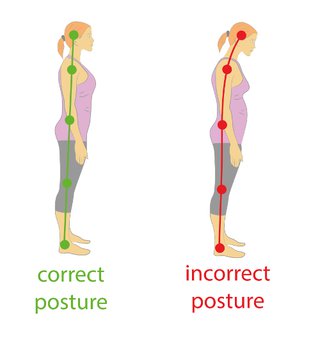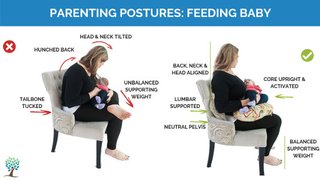Physical activity or exercise after pregnancy has benefits for your physical health and mental health.
These include:
- improved fitness
- better mood
- more energy
- improved posture
- reduced feelings of anxiety and depression
How your body changes after pregnancy
Having a baby changes your body. This can affect how soon you can be active.
After having a baby, your:
- tummy muscles stretch
- posture is different - posture is the position you hold your body in when sitting or standing
- pelvic floor muscles may be injured
- body tissue is more stretchy and less supportive
- joint stability is affected
If you had a caesarean, you will have a wound that needs time to heal.
Non-urgent advice: Talk to your GP before you start getting active if you had:
- any complication after giving birth that may have slowed down your recovery, such as an infection
Activities to start with after pregnancy
Start gradually and follow an exercise plan.
First focus on:
- pelvic floor muscle exercises
- your posture
Exercise plans 0 to 12 weeks after pregnancy
Pelvic floor exercises
Pelvic floor exercises can help strengthen the muscles that support your bowel, bladder and uterus.
This can help you if you have a:
If you have these symptoms, avoid high effort activity until your pelvic floor muscles are stronger.
High effort activity includes:
- running
- jumping
- lifting heavy weights
If you do high effort activity with a weak pelvic floor, you could make prolapse or incontinence symptoms worse.
Do your pelvic floor exercises daily.
Wait until 6 weeks after giving birth if you had a forceps or vacuum delivery.
Posture
Exercises for your posture can help:
- improve your physical strength after pregnancy
- ease back pain
How to correct your posture after pregnancy
You can practice improving your posture by following these steps:
- Keep your knees slightly bent.
- Bring your ribs over your hips.
- Roll your shoulders back and down.
- Tuck your chin in.
Keep the back of your neck long.

Watch how to correct your posture
This video shares advice on how to position your knees, pelvis and shoulders.
Correct posture during pregnancy
Sitting posture
Your sitting posture is also important.
A good sitting posture helps to support your:
- shoulders when you're feeding your baby
- back
To have a good sitting posture, make sure you:
- sit on your sitz bones, not your bum - your sitz bones are 2 round bones at the bottom of your pelvis
- support your lower back with a cushion to help you sit up

When to get advice about exercise
Get advice from a physiotherapist if you have:
- pelvic girdle pain
- a leaky bladder (incontinence)
- a heavy feeling or bulge in your vagina (pelvic organ prolapse)
Women's health physiotherapists are specially trained to help with these symptoms. Talk to your GP to get a referral.
